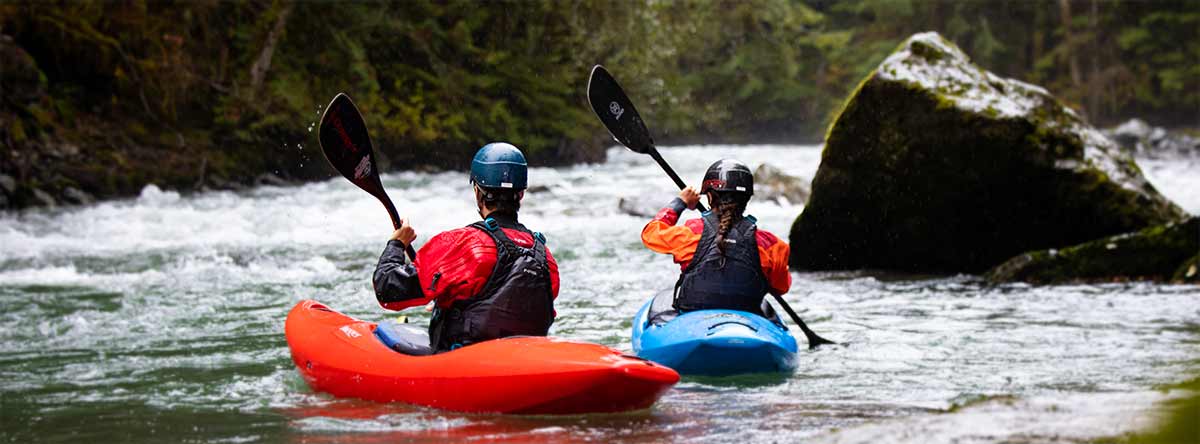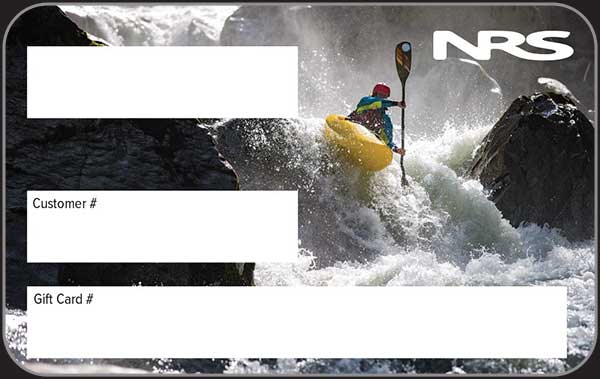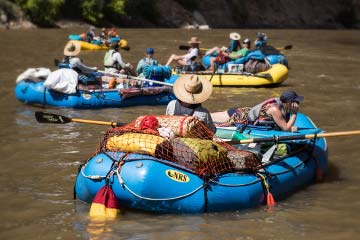Durable Water Repellent (DWR) and Paddlesports Dry Wear
Whether thrill-seeking between eddies or out for a relaxing afternoon paddle, staying (mostly) dry and comfortable is key to enjoying any time on the water. We depend on our paddlesports outerwear, dry wear and dry suits to keep rain and splash out while permitting excess moisture to wick away from the body. For years, manufacturers in the outdoor industry have applied a Durable Water Repellent (DWR) to the surface of waterproof breathable apparel to achieve this. DWR is also used in some neoprene apparel, such as NRS HydroSkin, to help the garment shed water.
Article Contents:

What Is Durable Water Repellent (DWR) and How Does It Work?
Durable water repellent (DWR) causes water on a treated fabric to bead up and roll away, keeping the material from “wetting out” and becoming a damp, sweaty mess.
DWR is a polymer treatment commonly used on waterproof-breathable technical fabrics to bond the fibers and improve water repellency. DWR reduces the surface tension of treated fabrics enabling water to roll off. By lessening the formation of condensation, a garment is better suited to prevent absorption and aid breathability by allowing moisture from perspiration to pass through to the surface. In non-breathable neoprene apparel, DWR may be applied to help keep the exterior of the garment dry to reduce the cooling effect of evaporation.
Durable Water Repellent technology is found in all kinds of outdoor gear including rain wear, ski jackets, and in the case of NRS, paddling tops, splash pants, dry suits, dry tops and HydroSkin.
What’s the Environmental Impact Of DWR?
NRS approaches product design around three design pillars: performance, longevity and sustainability. The PFAS-free waterproofing options that are currently available do not meet our requirements for performance and longevity and would lead to an inferior product that will not last (and thus would be unsustainable in another way). We are working with our partners and suppliers to seek a viable PFAS-free waterproofing solution. Until a solution is found, we will utilize the best available options.
NRS has discontinued the use of the most harmful C8 fluorocarbon-based DWR. We are moving to a C0 PFAS-free treatment on all appropriate products. We will use a less-harmful C6 fluorocarbon-based DWR when necessary to meet performance requirements (such as with full-submersion dry wear) while working to develop a viable PFAS-free alternative.
NRS is committed to doing what is best for the environment and humanity. We will eliminate PFAS from all NRS products as soon as it is practical. Finding a solution is a complex and lengthy process, but we are making progress every day.
Why Apply DWR to Fabrics?
Applying DWR is an important step in the construction, maintenance and care of water repellent clothing. Most kinds of technical outerwear use a multi-layer system to form a fabric that is both breathable and waterproof. DWR treated fabrics make up the outermost layer of these systems and act as a hydrophobic shield that prevents water from permeating the inner layers.

Does DWR Make My Paddling Apparel Waterproof?
While it makes waterproof apparel perform better, DWR does not make your apparel waterproof. When applied correctly, DWR boosts water repellency but won’t make a non-waterproof garment waterproof. Without a properly treated exterior, technical garments become unable to effectively deter the accumulation of moisture and are more susceptible to it soaking into the material.
DWR isn’t an all-purpose waterproofing solution, but it’s often the method used by manufacturers during production and chosen by end users to revitalize their outerwear.
What Is “Wetting Out?”
While durable, DWR doesn’t last forever. As it wears off, water no longer beads on the surface and instead seeps into the material fibers filling the spaces between threads and interfering with functionality. This is known as the fabric “wetting out.” In waterproof-breathable garments, this can hinder breathability and lead to a damp, clammy feeling during use.
How to Care for DWR on Paddling Apparel
As DWR resides on the face of fabrics, it’s easily affected by dirt and oils, which over time degrade the polymer coating, hindering its performance. DWR can also be removed by regular cleaners, so should be washed with a specific product when necessary to preserve its durability and function.
If water repellency can no longer be refreshed by washing and drying, you’ll need to apply a product to revive the durable water repellent coating. This can be a spray or wash-in treatment.
Properly restoring your product’s DWR means you’ll not only stay comfortable and protected from the elements, your gear will also last longer keeping you prepared for many trips to come. Regular upkeep also cuts down on garment turnover and prevents a hasty visit to the landfill.
We sell a number of products that are purpose built to maintain and refresh DWR-coated apparel.
How to Reactivate Durable Water Repellent
Reactivating the DWR on your paddling apparel can be done in a few easy steps.
-
Clean the garment. Household detergents leave residues that interfere with DWR performance. Instead, use a product like ReviveX Synthetic Fabric Cleaner or Nikwax Tech Wash that’s specially formulated to clean high-tech apparel.
Read the on-label instructions carefully, and follow directions for best results. Wash the garment in warm water and rinse thoroughly. If only dirt or other contaminants are masking the DWR, this is likely all that’s needed to reactivate water repellency.
-
Dry your gear. Splash wear and dry wear may be tumble dried on a warm, delicate setting to help re-activate the DWR. (Never dry at a high temperature.) Once your gear is dry, spray a bit of water on it. If the water beads up, the DWR is back on the job and you’re set for more adventures. If not…
-
Reapply a DWR treatment to the fabric. Many general-purpose renewal products require you to heat the treated garment in a dryer to “cure” the DWR. Tumbling dry at a low-heat, delicate setting is sufficient to cure the DWR. Never use high heat, which can damage latex, neoprene and waterproof zippers.
Some effective DWR treatments do not require heat activation, including 303 High Tech Fabric Guard, Gear Aid ReviveX Spray-On Water Repellent, Nikwax Spray-On Waterproofing, and Nikwax Wash-In Waterproofing. Follow each product’s instructions carefully for optimal results.
 NRS Gift Card: Always Fits, Always Wanted
NRS Gift Card: Always Fits, Always Wanted




